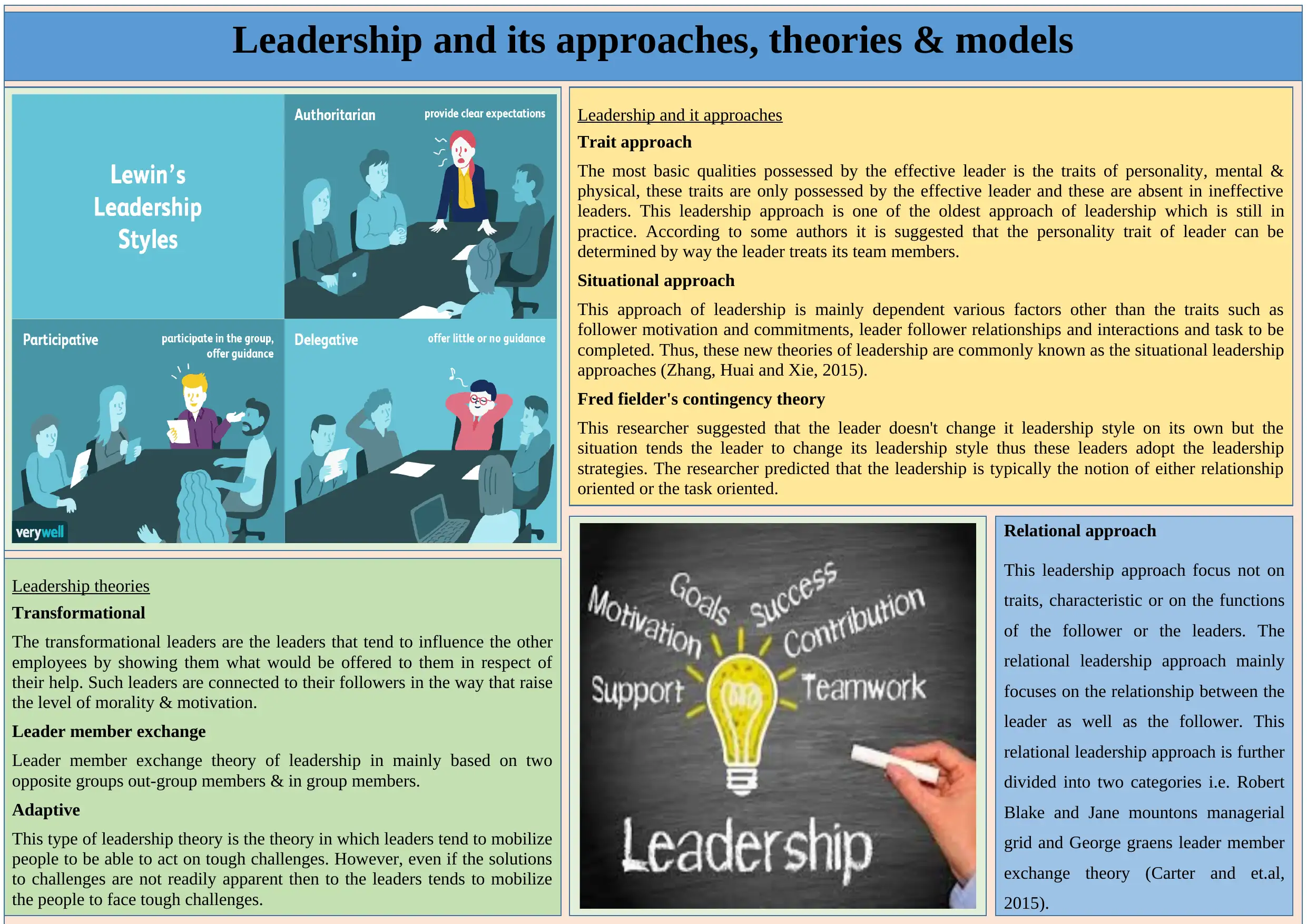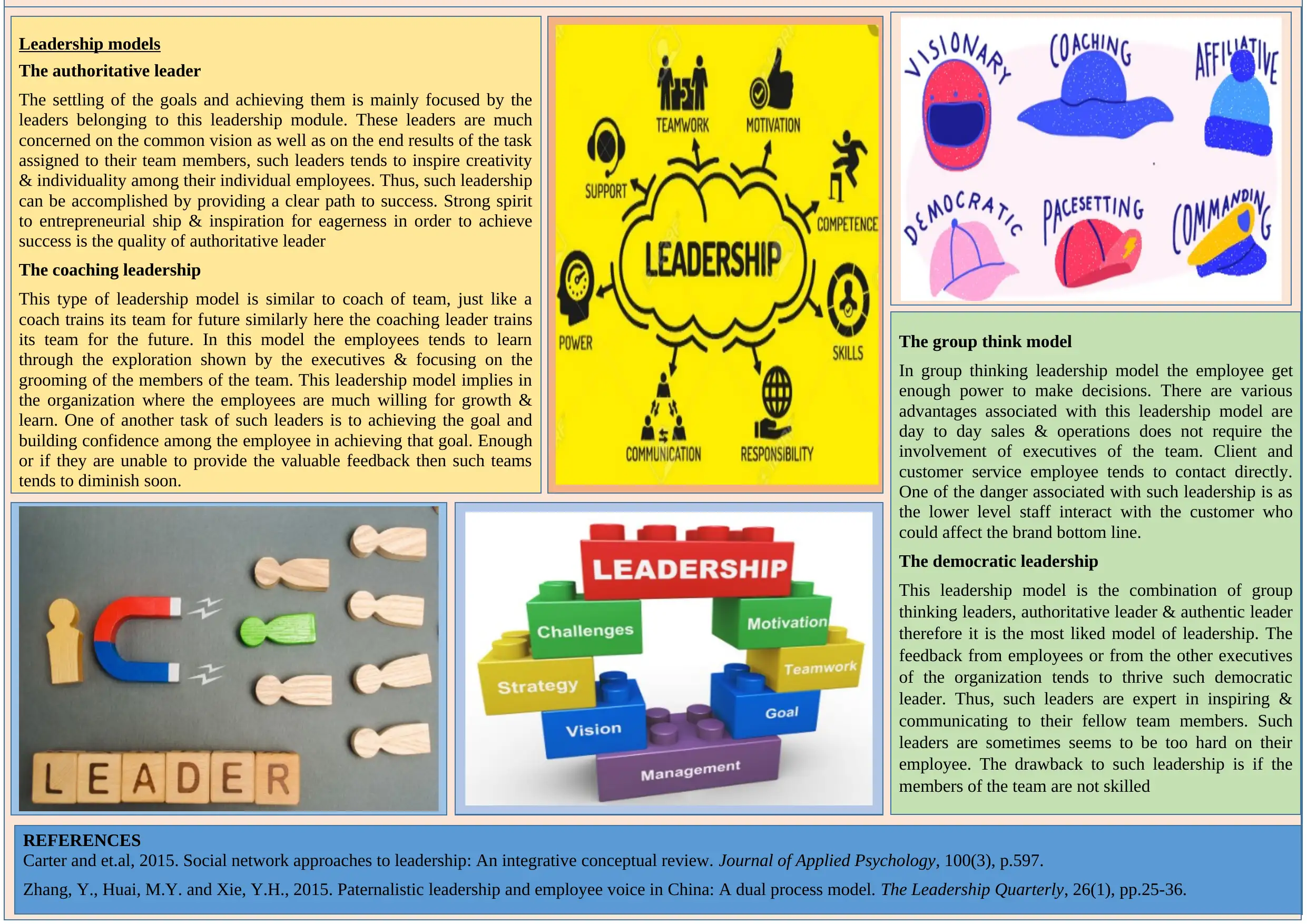Comprehensive Analysis of Leadership Approaches, Theories, and Models
VerifiedAdded on 2023/01/19
|2
|869
|47
Report
AI Summary
This report provides a comprehensive overview of various leadership approaches, theories, and models. It begins with an exploration of the trait approach, examining the personality, mental, and physical traits of effective leaders. The situational approach, which emphasizes factors beyond traits, such as follower motivation and relationships, is also discussed. Key theories like Fred Fielder's contingency theory, which suggests that leaders adapt their style to the situation, are analyzed. The report further delves into transformational leadership and the leader-member exchange theory, focusing on relational aspects. Leadership models, including authoritative, coaching, group think, and democratic leadership, are examined, highlighting their characteristics, advantages, and potential drawbacks. The report also includes references to academic sources to support the presented information.
1 out of 2







![[object Object]](/_next/static/media/star-bottom.7253800d.svg)